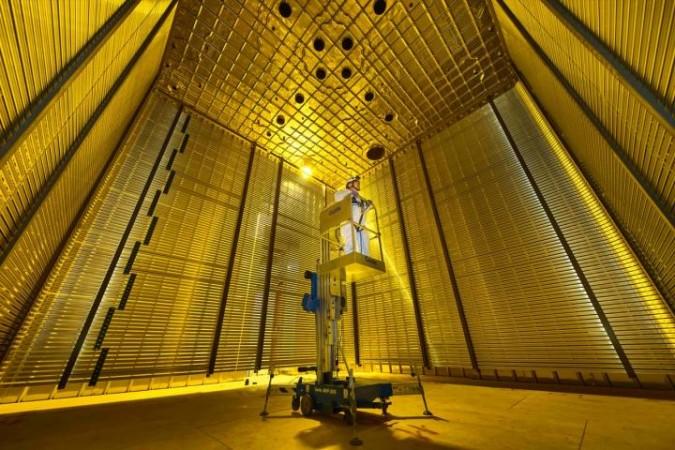
For an international physics experiment conducted at the European Organization for Nuclear Research in Geneva, Switzerland, researchers from The University of Texas at Arlington built prototypes for an aluminium electric field cage inside a particle detector.
The UTA vice president for research Duane Dimos said, "UTA's key role in the Deep Underground Neutrino Experiment prototype developments in Switzerland demonstrates the high regard in which we are held by the international physics community."
He added, "High-energy physics is a research key area for UTA where we have invested in having one of the largest and best-regarded experimental physics groups in the country."
The UTA played a big role in the findings of Higgs boson or 'God particle' in 2012 at the international experiment carried out at the Large Hadron Collider in Switzerland. Higgs boson is an invisible elementary particle which fills space and endows particles with mass.
The research expenditure for the UTA last year to carry out new particle physics experiments in the United States and around the world was $3.5 million. Over the next decade, the total grants are expected to go beyond $35 million.
Kaushik De, UTA physics professor and director of the Center for Excellence in High Energy Physics said, "UTA is participating in all the important projects - upgrades to the Large Hadron Collider's ATLAS experiment, the International Linear Collider in Japan, DUNE with the Fermi National Accelerator Laboratory in Illinois and the IceCube experiment in the South Pole."
He further added, "As a result, we are able to offer our students first-hand experience on international projects at the highest level."
The great mystery about the universe's matter-antimatter imbalance might get solved by The Deep Underground Neutrino Experiment or DUNE which is a U.S.-led international experiment that focuses on neutrinos, subatomic particles.
The DUNE experiment observes and compares the oscillations of neutrinos and antineutrinos as they move through space, changing form, mass, and 'flavour'.
Something apparent out of the experiment might put a stop to the debate on matter-antimatter imbalance and how life on Universe exists if all of the matter created in the early universe should have been cancelled out by equal amounts of antimatter would be solved.
The two neutrino detectors placed in the world's most intense neutrino beam will detect and record the particle interactions. While one detector is placed near the source of the beam, at the Fermi National Accelerator Laboratory in Batavia, Illinois, the second detector (larger one) will be installed more than a kilometre underground at the Sanford Underground Research Laboratory in Lead, S.D. -- 1,300 kilometres away.
Jaehoon Yu, UTA physics professor and lead on the DUNE project for UTA said, "Our project is to lead work on the DUNE prototype field cage and detectors being developed in collaboration with many European institutions, while the U.S. research facilities are being built."
"We already have 10 students working on this and several have travelled to Switzerland to work directly on the project," he added.
A field cage which is a scaled-down prototype of the final cage was co-designed by UTA-ETH Zurich, a STEM university. The size of the final cage is six meters by six meters by six meters. The electric field was tested at 150,000 volts in the air and will be operated at 300,000 volts during future testing in liquid argon.
It is an important part of the Time Projection Chamber which captures the collision of high-energy particles with argon atoms.
The scientists can study the nature of neutrinos and dark matter from the beam and cosmogenic sources with the help of particles detected through the collisions.
"What is important is that all these detector elements work together. Our teams are given this strategic opportunity because we always deliver on what we promise at the highest quality," Yu said.
Source - Project's website.

















